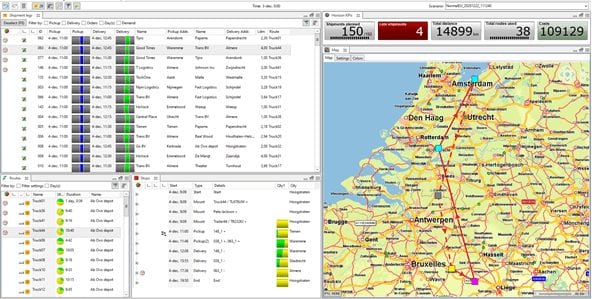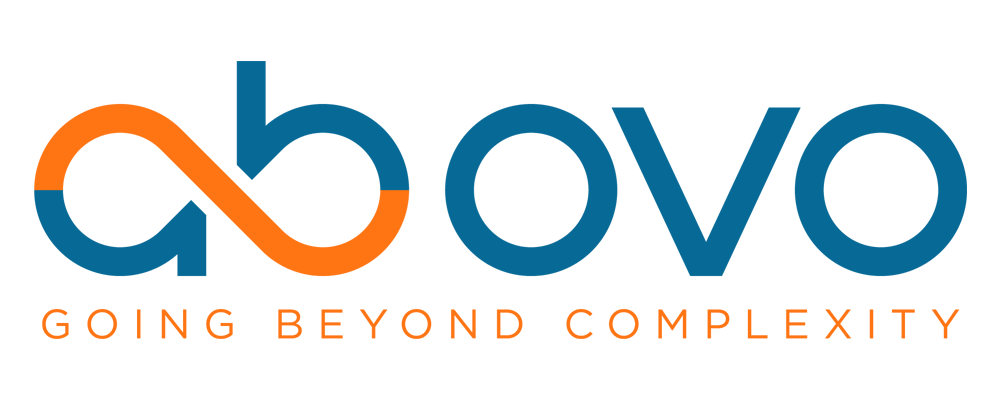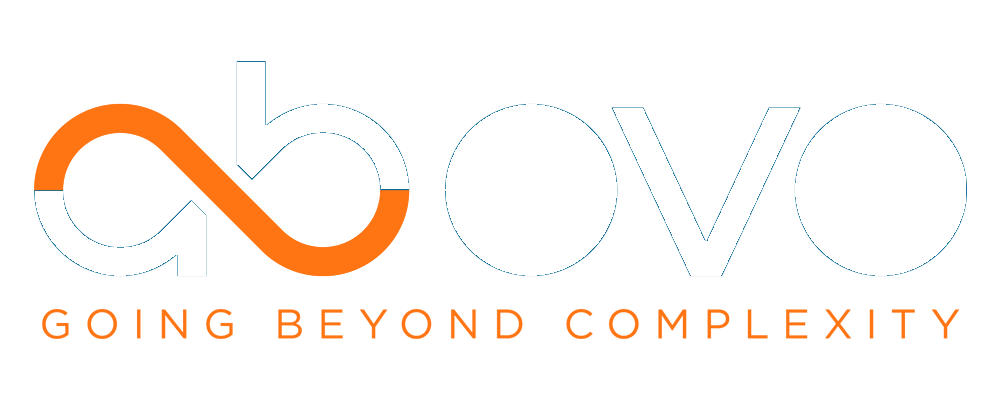Written by Ingrid Zwiers
KPI Based Planning | 8 mins read
– Key performance indicators (KPIs) form an important part of the available information required to determine how a company progresses to meet its business goals. KPIs help organizations understand if the company is headed in the right direction—and if not, where it needs to focus its attention.
While business goals are not always directly measurable in the day-to-day operations, KPIs usually are. For example, capturing LTL market share is a common business goal in the transportation industry. This can only be achieved by multiple departments working together on marketing, sales, quality delivery, and low costs. With lower costs that the transportation department realizes, not only the margin on existing business is increased, also the customer rates can be decreased if competitive pressure demands that. Overall, lower costs is a good KPI for the transportation department (to achieve a bigger market share). Obviously, they cannot just focus on lower costs, because that would mean the department fires everyone and doesn’t deliver anything, as that is always cheapest! So how to decide on department KPIs and what purpose do they serve?
KPI Based Planning
Key performance indicators (KPIs) form an important part of the available information required to determine how a company progresses to meet its business goals.Purpose of department KPIs
Usually, there can be three direct purposes distinguished of department KPIs, each used by someone else:
- Actual planning KPIs: commonly used KPIs for planners in the transportation industry are to reduce mileage, reduce planned empty mileage, on-time delivery (percentage). These KPIs try to steer the individual decisions of planners in the right direction, with as a result a good plan.
- Tactical KPIs: commonly used KPIs for managers/analysts of such a transportation department are quite like those that the planner uses but supplemented with e.g. the number of resources used and the actual on-time deliveries based on actual deliveries.
- Strategic KPIs: commonly used on C-level to analyze the progress on the direction of the department, e.g. total costs, costs per resource/shipment, number of shipments per resource or even total profit (which is not fully controlled by the transportation team).
Years ago, I led a department in a transportation company and the department was solely measured on gross profit (a type 3 Strategic KPI): everything between 8000 to 12000 Euros per employee was considered healthy. Below 8000 Euro, we needed to draft a “Get Well Plan” and above 12000 Euro, you had to consider your pricing to customers to ensure we would not lose customers to competition too easily… I liked the approach a lot, it was simple and clear and the actions were predefined – the management, fortunately, allowed for an explanation for exceptions as well.
However, it did not really help me on a day-to-day basis to ensure we would never get into the situation that my gross profit would drop below 8000 Euro. I had no clue, it was like getting a speeding ticket in the mail: you are annoyed and have to do what they ask (pay!), but it did not prevent me from speeding at the time it happened. The comparison is off a little because I do own a car with a speedometer, but most transportation companies still work with a planning system without the real-time speedometer.
KPI Based Planning
Usually, there can be three direct purposes distinguished of department KPIs: Actual planning, tactical and strategic KPIsGood and bad transportation KPIs
It is obvious, to achieve the business goals, companies need to set department KPIs, but that means they need a speedometer on the planning level then as well. It is important to realize the planner’s speedometer has to measure what he or she is aiming for.
It makes it complicated to use a speedometer in miles/hours, while the speed limit is in kilometers/hour. It makes it even more complicated when my “speedometer” in the car would consist of two separate devices: one measuring distance driven and the other measuring the time since departure. I surely technically have all the details available to compare my speed with the maximum allowed speed, but I am sure the calculations would be too cumbersome to do while doing my real work (driving in this case), so I would end up guessing and hoping for the best.
Now look at the common KPIs I mentioned above as planning KPIs and take for example “reduce distance driven”. A large part of the costs is surely distance-related, but it is like the example above, we are measuring only a part of the overall goal to do transportation at the lowest costs (considering all deliveries must be on time).
A common KPI like “reduce planned empty mileage” even has more setbacks. It is easily manipulated to show a good value, which actually increases total costs and does nothing to decrease it. Imagine a trip with 2 stops, one far away with a small and one nearby with the rest of the truckload, and some time window constraints. Examples can easily be drawn up where the consequence would be that the truck first drives full to the far-away location, and almost full all the way back, just to make this KPI better. The consequences of that could be inefficient routes and more resources used than required.
Good KPIs for a transportation department include whether all orders are planned and expected to be delivered on time, as well as the total costs of doing so. Of course, all these considering hard restrictions such as allowed driving and working time or rules around dangerous goods transport. If the KPI to measure costs is such a good and easy KPI, this leads to the question: Why don’t we steer on the KPI measuring actual costs, if costs are what we are interested in? The answer usually is: it is too complex to calculate on the spot!
KPI Based Planning
Good KPIs for a transportation department include whether all orders are planned and expected to be delivered on time, as well as the total costs of doing so.KPI based planning
In this era, too complex to calculate is no longer a reason to not display the real KPIs. One of the key benefits of our SmartRouting solution is the full transparency of all KPIs that any business likes to measure on. SmartRouting calculates KPIs instantly, not only when a planner makes his own change or the optimizer runs, but also when a driver adds his real-time updates affecting the planning. On top of that, also other planners making changes in their system would immediately affect all planner’s KPIs.
This means that a planner can move a shipment, and observe the KPI. He or she can undo the change if he doesn’t like the changes to the KPIs, and try something else instead. This helps the planner directly see what is right and what is wrong. Often, that insight alone is already a huge benefit and step forward for better plans in the future.
Additionally, the KPIs are used to support the planner making decisions, by showing him multiple options and their KPIs beforehand, after which the planner can select his preference, as he may have soft knowledge to include too.
As a final step, a fully automated optimizer steers the planning in the right direction. That can only be done with the right KPIs in place for day-to-day planning. An optimizer has no preference and will make use of every loophole given (such as reduce planned empty mileage) and make the weirdest operational plan if the KPIs are set wrong.

Summary
KPIs are crucial to achieve the business goals. Where KPIs on management level are common nowadays and evaluate the performance of the team after the fact, real-time planning KPIs are less common in the transportation industry. The challenge with planning KPIs for transportation departments nowadays is that they sometimes have a delay, are in another system, are easy to manipulate, or they don’t measure the contribution to the business goal at all.
SmartRouting addresses all these concerns. Out of the box, it measures KPIs such as on-time delivery and total costs of the plan (and many more). Custom KPIs can easily be implemented by the transportation company itself and displayed on the planning screen. For management, easy to configure KPI dashboards can be set up to immediately see the change of KPIs over time in both numbers and charts.
About SmartRouting
Our SmartRouting solution is a full suite to do route planning and optimization for your transportation puzzle, large or small, simple or complex. Automated planning, continuous optimization, suggestions to the planner are all included.
Instant updates and recalculation of the future plan comes out-of-the-box, to provide full transparency to the planners on their actions and driver updates, which in turn allows the planner to make better decisions.
It comes with a fully developed standard integration package to seamlessly connect to all other systems in your landscape, such as (but not limited to) a Transportation Management System, a payroll system, and on-board computers. In case your system landscape does not include on-board computers with the ability to sign-off deliveries and track your resources with GPS, our solution also includes a ready-made Mobile Driver App.
For the details of the functionalities of the SmartRouting solution, please have a look at our Solution Sheet.
For more information, contact us with any questions you may have.
Ingrid Zwiers is an experienced Advanced Planning and Scheduling consultant at Ab Ovo for over 5 years. With a background in Operations Research (MSc) and extensive business experience for over 10 years in the logistics sector, she wants to help companies get all the potential savings out of their planning challenges without compromising the competitive edge that each company has.


